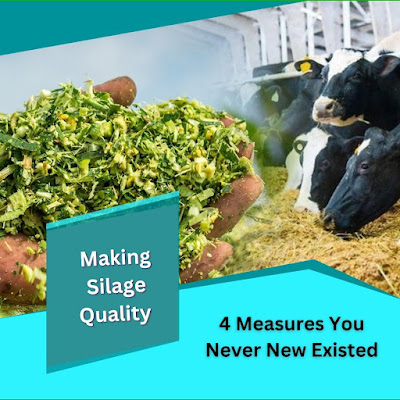Five Elements Of Top Quality Silage
Feed
interests for the largest share of production costs on a farm. To spotlight
this fact, we should understand that farmers are thinking of new ways to save
feed costs. However, lesser feed costs should not compromise quality. The best
way to prohibit it is to include high-quality silage in dairy cattle rations.
Elements for your top quality silage
Here
is the section you all were waiting for:-
Moisture Content
When
you want to find out the proper time to yield the Corn
Silage For Sale, the moisture
content is critical. The perfect moisture content is 65 percent, more or less.
Silage with more than 70 percent moisture content means that bacteria can grow,
leading to more dry matter and less palatability. Even though DM is necessary
for silage, palatability is also an essential element.
On
the other hand, if the moisture amount is less than 60 percent, it means your
silage will be much challenging to pack and lead to more air in the product,
leading to lower density and mold and yeast growth. So we, as Silage
Agro Private Limited, keep the moisture amount in our silage
around 65 percent. That’s why our silage is the best.
Cut Length
If
you think that cut length doesn’t matter, then think twice. You may be making a
big mistake. See, here’s the theory, if silage is cut too rough, then packing
it will give you a tough time. If you cut it too short, your animals will
become overweight by eating it. If it is long, then you get underweight or weak
dairy animals. So please see the right cut length here as we at Silage Agro
Private Limited recommend.
●
It would be best if you cut processed silage at
three-fourths of an inch.
●
For unprocessed silage, you should have a chop
length of one-fourth or half of an inch. Both will do.
Grain Processing
The
outer layer of the grains limits microbe access to the starch in a morsel. A
forage lab can find out the grain processing points. A score between 50 and 70
is just fine. However, more than 70 is your perfect number of points.
You
might have complexities while monitoring grain while processing, so we are
giving you a standard measurement. To wrap up, every cup of grain should have
less than 1 or 2 grains. If you have 0 damaged grains, then you are doing
something right.
Packing
Your
ideal pack of silage should be tight and completely sealed, as it creates an
atmosphere inside the package, which allows good bacteria to ferment it. It is
a good practice for you to calculate packing capacity before harvesting.
Your
target packing capacity is 15 pounds per dry matter per cubic foot or more. We
pack our NutriMeal
Silage with European bailing technology. That’s why
the pack comes out sealed and tight with the suitable capacity out of our
processing unit every time.
Covering
Cover
your silage with an oxygen barrier film and B & W plastic every time, as
doing so will reduce dry matter and nutrients loss. Lining up bunkers with
plastic and putting extra weight on the silage bales is also good.



Comments
Post a Comment